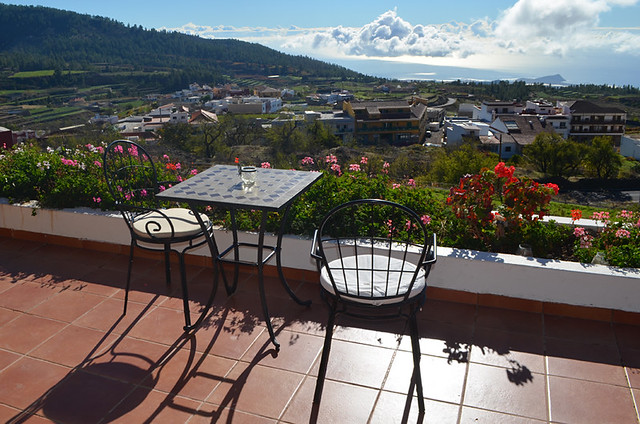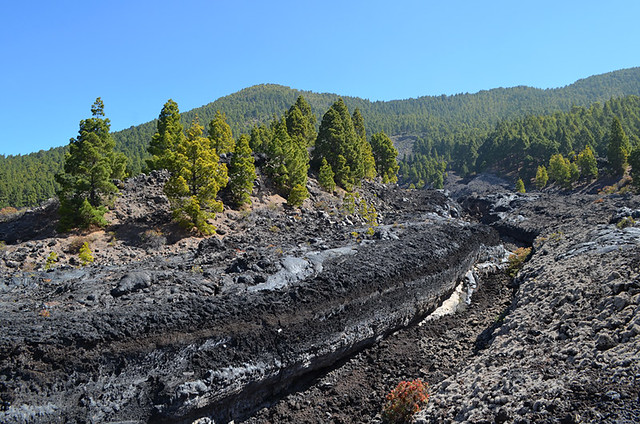This is and isn’t an article about volcanoes in the Canary Islands.
In early November 2017 nearly all Britain’s tabloids published headlines which were a variation of – ‘Fears Tenerife’s Mount Teide volcano is about to ERUPT after more than 20 quakes rock the island in just four days.’

The reports which followed most were scandalous, with some claims which were simply borderline fiction. It was trashy journalism. But there were facts in the articles, and smarter readers should have had their fake news klaxons ringing loudly if they actually added up sections of text which contradicted headlines.
Facts: There were more than 20 tremors registered on Tenerife over the space of a few days, the largest of which was 1.4 on the Richter Scale.

Reality: 1.4 is very low in earth tremor monitoring circles. On 10 November, an unremarkable day in earthquake terms, the European-Mediterranean Seismological Centre recorded 30 tremors on their website, but they only publish tremors above 2.0 on the Richter Scale. These tremors took place in Greece, France, Italy, Austria, Turkey, Portugal, and Switzerland. Despite them all being stronger than Tenerife’s, not a mention in the UK press. 1.4 is so low it wasn’t felt by any of the population even though numerous publications used the phrase ‘rocked the island’.

There was bemusement in Spanish language press where the UK gutter press is often seen as something of a joke, not a particularly funny one. The Tenerife Tourism Board sent out a press release to counter what they referred to as “a number of misleading reports in the UK media”.
“Tenerife is an oceanic active volcanic island and as a typical active volcanic system, has background seismic activity related to its volcanism. Seismic swarms are common in active volcanoes even during dormant periods, and Tenerife is currently experiencing a period of dormant volcanic activity.
The volcano-monitoring programme on Tenerife follows the highest international standards using permanent networks of instruments, as well as periodic scientific campaigns of observation. These instruments enable us to monitor the seismicity, gas emissions and ground deformation with an unprecedented level of detail.
According to the indications of PEVOLCA, the volcano alert level is currently in GREEN position, the lowest level.”
Worse was the case of the La Palma mega-tsunami.

A couple of weeks before Tenerife’s shudder, La Palma experienced a swarm of earth tremors which had tabloid writers churning up mega-tsunami threat stories from more than a decade ago. Tabloids even managed to link heavy November rains (a common occurrence) with volcanic activity. This is one headline.
“Torrential rain emergency as landslides to trigger MEGA ERUPTION”

It is utter nonsense. People who believe “Experts fear the volcano is due to blow at any moment because its last eruption was back in 1971” deserve the sleepless nights reading scare headlines such as these might cause.
Papers lied outright when they reported “Panic has spread among the 86,000 residents on the island”. As one local put it when I told them about what was being claimed in the UK press “we’re panicking so much we went to the beach.”

But there was an unusual swarm of tremors in early October. These were monitored closely by the National Geographic Institute and Involcan (the Canary Islands Volcanological Institute). The conclusion was although the swarm was unusual, it was “within the range of values that can be considered normal for the Cumbre Vieja volcano”.
Long after Spanish papers ran headlines such as “El Volcán Cumbre Vieja ‘respira’ con normalidad” (The Cumbre Vieja volcano breathes normally) British papers were still squeezing out “FEARS are growing that a volcano on the popular Brit tourist destination of La Palma could be on the verge of erupting”.
The basis for the mega-tsunami reports was a Horizon documentary from 2000 where a couple of scientists put forward a theory that a piece of La Palma the size of the Isle of Man could detach itself from the island and slide into the sea creating a mega-tsunami which could wreak havoc across the world.

It is revealing papers carrying the scare stories used phrases like ‘some experts say’ and ‘some scientists believe’ when referencing the mega-tsunami theory. They failed to use the names of the actual scientists responsible for the theory for a very good reason. It’s unlikely the scientists involved would be pleased to have their names linked with some of the more extreme newspaper stories.
Seven years ago I interviewed Dr Simon Day, one of the scientists involved with the Horizon documentary. Dr Day believed that part of La Palma would eventually detach itself and fall into the sea, probably as a result of an eruption. Eventually being the key word.
“It might not be the next eruption, or the one after that, but every time it happens and the Cumbre Vieja moves, it becomes more unstable. Eventually it will detach and slide into the sea,” he told me.

Not everyone agrees with this. Fellow experts don’t and during the UK tabloid frenzy the Spanish press published a report from Involcan stating why they believed the mega-tsunami theory to be wrong.
The other thing tabloids failed to mention was the timescale involved. If Dr Day is actually right, when should we start to worry?
The best I could get from him was he was convinced if he returned in 10,000 years La Palma would be significantly smaller than it is now. Not one newspaper printed anything like the comforting piece of advice he gave me – “Worry more about crossing the road.”
The journalists who wrote the ‘Canary Islands about to erupt’ articles don’t know the Canary Islands or anything about patterns of volcanic activity. But they do know how to write sensationalist, attention grabbing pieces.
Jack is co-editor, writer and photographer for BuzzTrips and the Real Tenerife series of travel websites as well as a contributor to online travel sites and travel magazines. Follow Jack on Google+




Be the first to comment